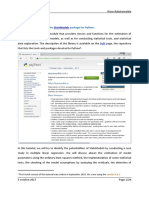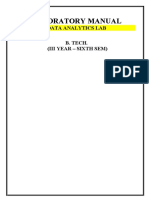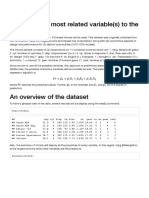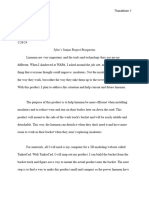0% found this document useful (0 votes)
61 views6 pagesANOVA and T-Test Analysis Guide
This document discusses and provides examples of performing one-way ANOVA and t-tests in Python using libraries like scipy, statsmodels, and pingouin. It shows how to conduct one-way ANOVA on different groups of performance data and explore differences between groups. It also demonstrates three methods of performing two-sample t-tests to compare two groups of data and determine if their means are statistically different.
Uploaded by
Garuma AbdisaCopyright
© © All Rights Reserved
We take content rights seriously. If you suspect this is your content, claim it here.
Available Formats
Download as DOCX, PDF, TXT or read online on Scribd
0% found this document useful (0 votes)
61 views6 pagesANOVA and T-Test Analysis Guide
This document discusses and provides examples of performing one-way ANOVA and t-tests in Python using libraries like scipy, statsmodels, and pingouin. It shows how to conduct one-way ANOVA on different groups of performance data and explore differences between groups. It also demonstrates three methods of performing two-sample t-tests to compare two groups of data and determine if their means are statistically different.
Uploaded by
Garuma AbdisaCopyright
© © All Rights Reserved
We take content rights seriously. If you suspect this is your content, claim it here.
Available Formats
Download as DOCX, PDF, TXT or read online on Scribd
/ 6

























































































